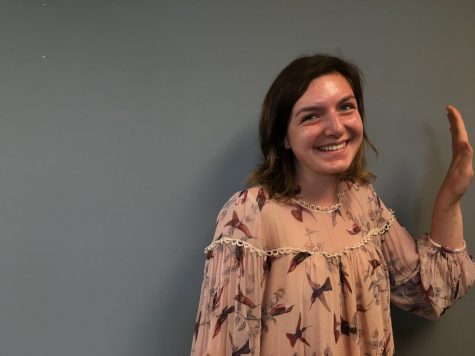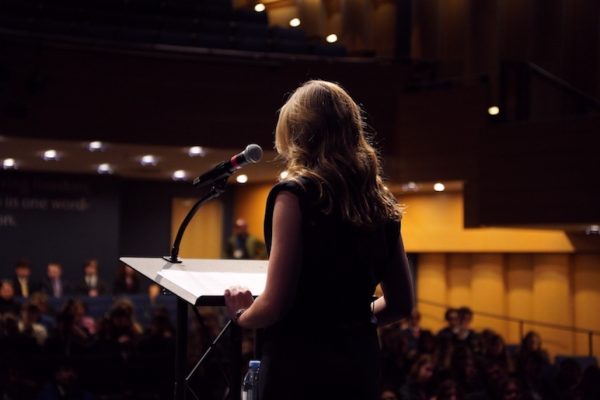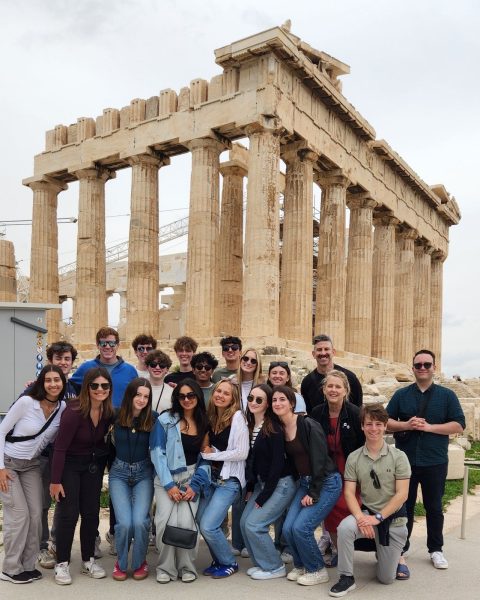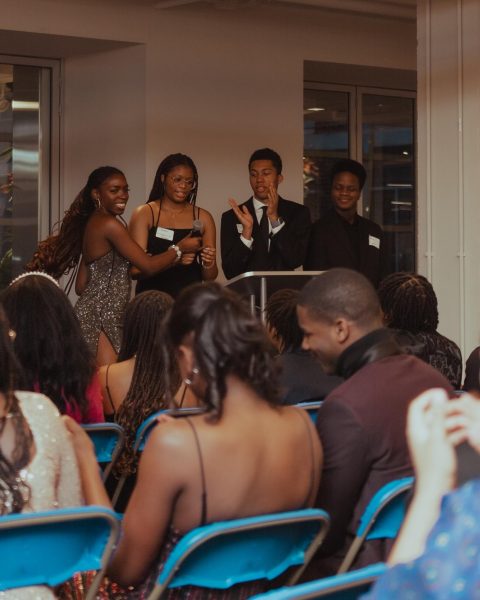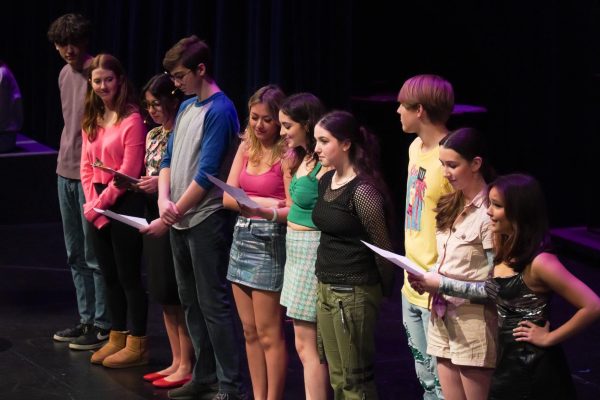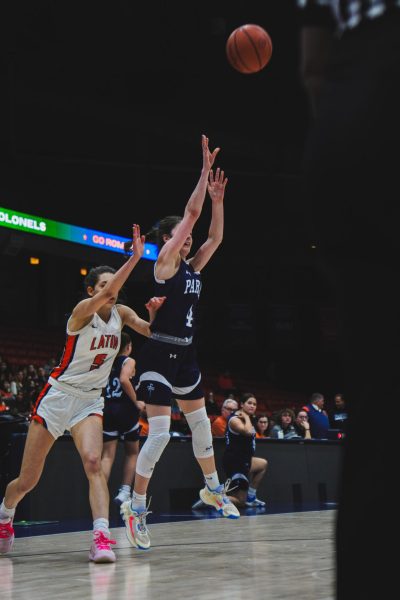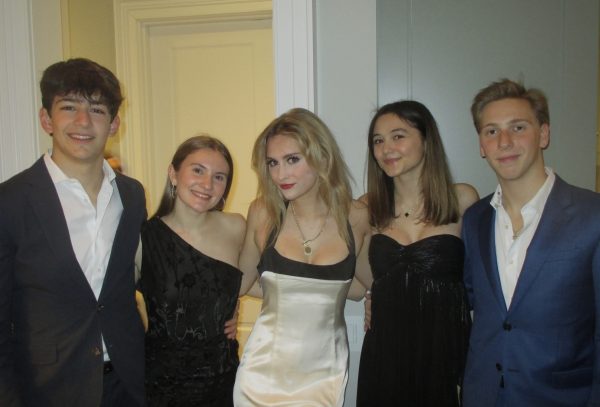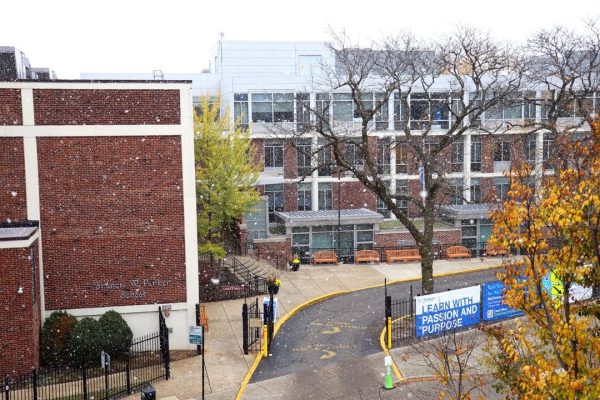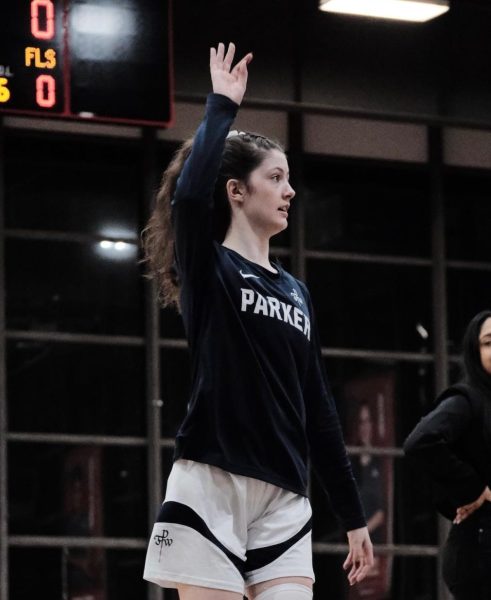Mirrors and Windows
Reimaging Diversity, Equity, and Inclusion Work at Parker
Some time before the renovations made to the Kovler Library, in the back corner office by the Library Lab overlooking the crowded Webster Street parking lot, Director of Diversity, Equity, Inclusion (DEI) Dina Levi worked. Since Levi’s resignation in 2015, the one-person director position has been transformed into a school-wide, committee-style platform. With two co-chairs and three directors per school division, the DEI community at Parker is continuously evolving.
Kindergarten teacher Kirkland La Rue and music teacher and department co-chair Kingsley Tang are the current Co-chairs of the DEI department at Parker. “In the past, Parker has used an organizational structure that had an administrator who was in charge of DEI work at the school,” La Rue said. “This year, Parker moved to a different model where there are two Diversity, Equity, and Inclusion department Co-chairs.”
La Rue and Tang assumed their new roles as Co-Chairs this school year. “Diversity Coordinators we’ve had for a few years, and we aim to have three at each division level,” Tang said. “The Co-Chair position is new–the coordinators felt like they needed a strong representation in conversations and committee meetings. They needed someone to coordinate. We started Co-Chairs, and they wanted two people across the school.”
Through this position, Tang and La Rue aim to bring the school together as a whole through conversations about diversity, equity, and inclusion. La Rue said, “Our job is really to think about issues that play out in classrooms, issues that teachers should be thinking about as they are creating curriculum, and putting on events around the school.”
While this is the first year that the DEI department has been formalized in this way, DEI coordinators have existed within school divisions in the past. This year, Upper School Coordinator Rolanda Shepard and physical education teacher Terry Davis have assumed the role of high school DEI coordinator alongside Upper School Drama Teacher and Drama Department Chair Leslie Holland Pryor.
Lower School division coordinators include SK teacher Ashleigh Cross, JK teacher Lisa Nielsen, and third grade teacher Nadia Pardesi. The Intermediate and Middle School coordinators are Intermediate School Counselor Jennifer Lira, Intermediate and Middle School Coordinator Phenise Williams, and Middle School Counselor Reyna Smith.
Tang in particular feels that by recreating this department, more voices from around the school will be heard. “We didn’t have diversity of representation among the coordinators,” Tang said. “We talked about a lot of issues in department chairs meetings, but there wasn’t a voice to represent the work that the coordinators were doing.”
Now, every subject and area of the school can have a voice if they want to. Tang said, “It’s saying that English has representation, science has representation, drama, music, art– they’re all at the table meeting with Ms. Jurgensen, with Dr. Frank, and talking about issues.”
Shepard, for one, has long been interested in assuming a position like a DEI division coordinator. Shepard said, “This year, with the support or Mr. Brandon and Ms. Jurgensen, I thought I might give it a try.”
Even though the DEI department meetings have not officially begun for the year, Shepard is already imagining the effects of their work. “For me, if we end up better, in some way better than we are now, learning to accept and learn more about how we’re all different but also the same–learning to appreciate each other, I would be pretty happy,” Shepard said. “For me, it’s always kind of staying small and working up and working up until you see major change.”
La Rue sees all the goals that Shepard and the other DEI coordinators have as parts of a greater whole. “I really like to think about schools as systems that have to work with one another,” La Rue said. “The way I wrap my head around what I do is that a division is a part of a whole of a school. As much as I can immerse myself in the DEI things that are happening school-wide, it informs what I can do in my classroom and vice versa.”
As the DEI department begins their work, each member is imagining different ways that their work will affect the school. “Let’s say a conversation about scheduling–and everyone has their opinion,” Tang said. “Now there’s an opinion that talks about how does our scheduling effect inclusion? How are certain kids able to get to certain classes? It allows for those voices and concerns to be at the same level.”
Even for some of the youngest students in the building, La Rue is finding ways to incorporate lessons about DEI into the classroom. “They’re quite capable with considering other people’s perspectives, and that’s a lot of what our work is down here,” La Rue said. “I use a metaphor of windows and mirrors–windows being those opportunities to see and hear the experiences that might be different than your own, and mirrors being those that reflect your own experiences.”
